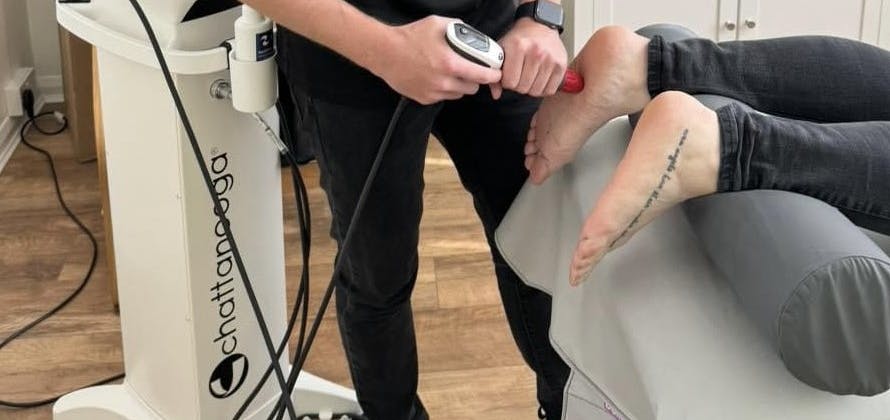Have you ever heard about shockwave therapy? If not, you’re in for a treat. This treatment is making waves (pun intended!) in the world of medicine and physical therapy. So let's explore the world of shockwave therapy and uncover why it might be just what's needed for certain injuries.
What is Shockwave Therapy?
Shockwave therapy (SWT) is a non-invasive treatment that uses acoustic waves to promote healing in injured tissues. It sounds pretty high-tech, but the principle is straightforward. These waves stimulate the body’s natural healing processes, making it a useful option for treating chronic pain and injuries.
How Does It Work?
Imagine having a nagging injury that just won’t heal. You’ve tried rest, ice, heat, and maybe even some painkillers, but nothing seems to work. This is where shockwave therapy steps in. The process involves directing sound waves into the affected area. These waves help to increase blood flow, break down scar tissue, and promote the regeneration of healthy tissue.
Here’s a quick rundown of the steps involved:
- � Firstly, a therapist will carry out a full assessment involving a detailed case history and assessment.
- Shockwave time- a gel is applied to the area, the same used for ultrasound scans. The wand gun is then placed lightly over the area and the programme is set. Starting with a low level and increasing to a therapeutic effect. Your therapist will be discussing with you the whole time. The pulses will be felt but not painful.
- Therapy: Sessions typically last about 15-20 minutes and can be repeated over a few weeks.
What Can Shockwave Therapy Treat?
Shockwave therapy is like the Swiss Army knife of treatments. It can be used for a variety of conditions, including:
• Plantar Fasciitis: Those with stubborn heel pain often find relief with SWT.
• Tennis Elbow: This common overuse injury responds well to the therapy.
• Calcific Shoulder Tendinitis: Shockwave therapy can help break down calcium deposits.
• Chronic Tendinopathy: Conditions like Achilles tendinitis or patellar tendinitis are prime candidates.
• Myofascial Pain Syndrome: Muscle pain and tenderness can also be alleviated.
Benefits of Shockwave Therapy
So why should you consider shockwave therapy? Here are a few reasons:
• No needles, no surgery, just sound waves, a non invasive treatment.
• Sessions are short, and there should rarely be need for more than 6 sessions with many only needing 3-6.
• Most patients experience only minor discomfort and very few side effects which are minor.
• Many studies support its efficacy for various conditions, backed with clinical evidence.
What to Expect During Treatment
When we first mention Shockwave I imagine clients minds thinking electric shock style treatments. so let's be clear there’s no need to worry about pain. Most people describe the sensation as uncomfortable rather than painful. During the session, you might feel some pressure or mild discomfort, but this is usually well-tolerated. After the treatment, you might experience some soreness, similar to what you’d feel after a good workout. This is a sign that your body is starting to heal. For many people there is a marked improvement initially after treatment.
Who Should Avoid Shockwave Therapy?
While shockwave therapy is safe for most people, there are some exceptions. It’s not recommended for those with certain health conditions, such as:
•Blood Clotting Disorders
•Tumors
•Infections
•Pregnancy
Your practitioner will ask all the right questions and discuss any reasons that shockwave may not be suitable for you if they feel that's the case.
In Summary:
Shockwave therapy is an exciting advancement in the field of pain management and rehabilitation. Whether you’re an athlete dealing with overuse injuries or someone struggling with chronic pain, SWT offers a promising option. It’s non-invasive, quick, and most importantly, effective.
If you’re dealing with a stubborn injury, consider asking your practitioner about shockwave therapy. It might just be the game-changer you need to get back on your feet and back to doing what you love.






